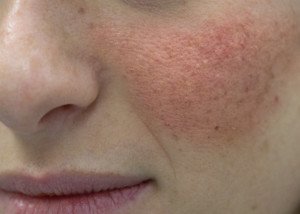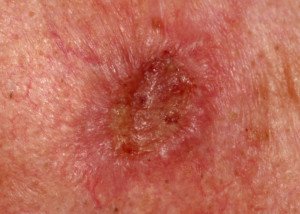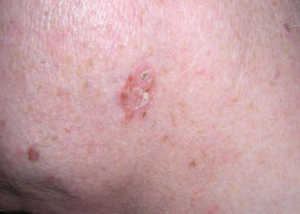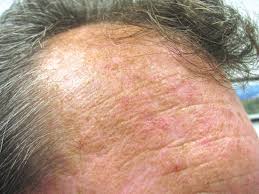
Actinic keratosis
Though most squamous cell carcinomas were once actinic keratoses, most AK’s will not turn into cancer.
However, it’s impossible to predict which lesions will eventually begin undergoing a malignant transformation.
Actinic keratosis is a form of sun damage that’s very common among adults middle age and older, though it can affect people in their 30s.
Because there are no known ways for a dermatologist to predict which actinic keratosis lesions will transform into squamous cell carcinoma, any and all AK lesions should be eradicated.
Did you read somewhere that an AK is actually a very early SCC?
Some dermatologists and dermapathologists believe that AK is SCC in situ (meaning, still confined to its original location).
In other words, AK and SCC are actually on the same continuum.
However, other dermatologists and even pathologists stand firm that an AK is not a frank SCC.
Call them what you wish, but the bottom line is that AK’s need to be treated, never ignored!
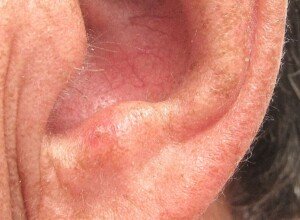
The small nodule is an actinic keratosis. Source: Future FamDoc
Length of Time for Actinic Keratosis to Morph into Squamous Cell Carcinoma
“In an otherwise healthy individual, the progression from actinic keratosis to squamous cell carcinoma can take many years or even decades,” begins Vivian Bucay, MD, with the Bucay Center for Dermatology and Aesthetics, an integrative dermatology practice in San Antonio, TX.
This doesn’t mean you should neglect what appear to be AK’s on your face, neck, scalp, back, ear, trunk or leg.
Get the patches diagnosed, then treated, even if you don’t have insurance.
Squamous cell carcinoma usually doesn’t spread to distant sites of the body, but it can also be fatal – usually in elderly people who may have put off seeing a doctor until the lesion becomes gruesome.
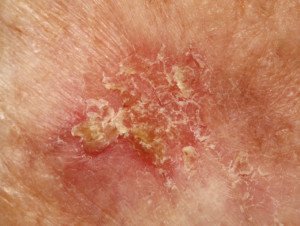
SCC. Dermatology11
Anywhere from 700,000 to a million cases of squamous cell carcinoma are diagnosed annually in the U.S.
An accurate estimate of how many people in the U.S. die from SCC each year is not known, because SCC is not tracked by cancer registries. The range is from 2,000 to 15,000, depending on the source.
That may seem reassuring – as low as 2,000 among a land of 327 million (as of 2019). But remember: There is no way to predict who’ll be among those 2,000 – or 15,000.
Fast Progression of Actinic Keratosis to Squamous Cell Carcinoma
Dr. Bucay explains, “In someone with a compromised immune system, such as transplant patients or those on medications that suppress the immune system, the progression from actinic keratosis to squamous cell carcinoma can be much faster, weeks to months.”
People who’ve had organ transplants are about 100 times more likely to develop SCC than is the general population – due to the powerful immuno-suppressant drugs that they must take every day for the rest of their lives.

 In private practice since 1991,
In private practice since 1991, 